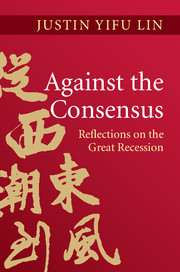Book contents
- Frontmatter
- Contents
- List of figures
- List of tables
- List of boxes
- Preface
- Overview
- Part I What Caused the 2008–9 Global Crisis?
- Part II A Win-Win Path to Recovery
- Part III How Poor Countries Can Catch Up: Flying Geese and Leading Dragons
- Part IV Toward a Brave New World Monetary System
- 12 The evolution of the international monetary system
- 13 Emerging pressures and policy challenges
- 14 (In)stability of the emerging multiple reserve currency system
- 15 The thinking behind the main reform proposals
- 16 Costs and benefits of major reform proposals
- 17 A proposal for a new global reserve currency: paper gold (“p-gold”)
- 18 Why it still matters
- References
- Index
13 - Emerging pressures and policy challenges
from Part IV - Toward a Brave New World Monetary System
Published online by Cambridge University Press: 05 June 2013
- Frontmatter
- Contents
- List of figures
- List of tables
- List of boxes
- Preface
- Overview
- Part I What Caused the 2008–9 Global Crisis?
- Part II A Win-Win Path to Recovery
- Part III How Poor Countries Can Catch Up: Flying Geese and Leading Dragons
- Part IV Toward a Brave New World Monetary System
- 12 The evolution of the international monetary system
- 13 Emerging pressures and policy challenges
- 14 (In)stability of the emerging multiple reserve currency system
- 15 The thinking behind the main reform proposals
- 16 Costs and benefits of major reform proposals
- 17 A proposal for a new global reserve currency: paper gold (“p-gold”)
- 18 Why it still matters
- References
- Index
Summary
The first dozen or so years following the demise of the Bretton Woods system were tumultuous for the international monetary system. Two oil price shocks complicated national monetary policy, and inflation reached double digits in the United States and other major economies. From the middle of the 1980s, however, prices stabilized, as central banks in the major economies adopted inflation targeting, and GDP growth became less volatile – at least until 2007 – especially in reserve currency countries (referred to as “the Great Moderation”).
That said, the United States experienced a series of asset price bubbles, and the high-income countries are still staggering from the effects of the 2008–9 financial crisis. Although several leading economies experienced less growth volatility (as measured by the standard deviation of GDP growth) before the crisis, some newly industrialized countries suffered from high volatility (such as South Korea). Even some of the top-performing emerging economies were hurt by the crisis.
Part I argued that the crisis arose because of US financial deregulation combined with lax monetary policy facilitated by the dollar’s role as an international reserve currency. Is there an alternative to the dollar-dominant system?
- Type
- Chapter
- Information
- Against the ConsensusReflections on the Great Recession, pp. 160 - 165Publisher: Cambridge University PressPrint publication year: 2013



